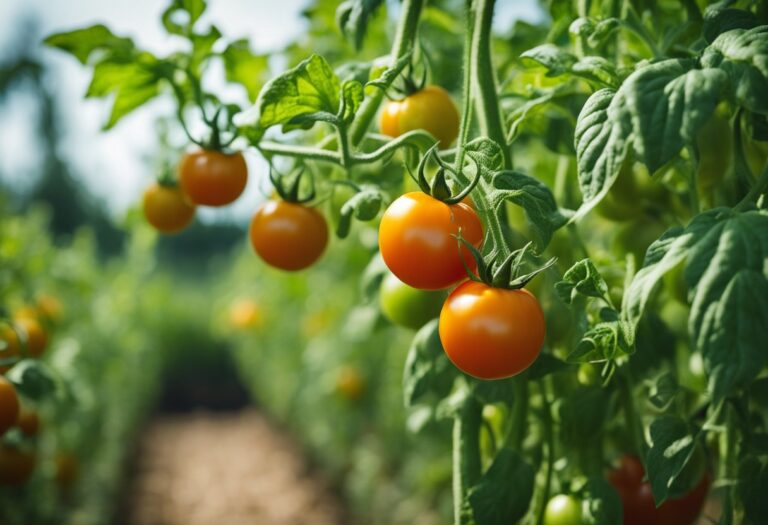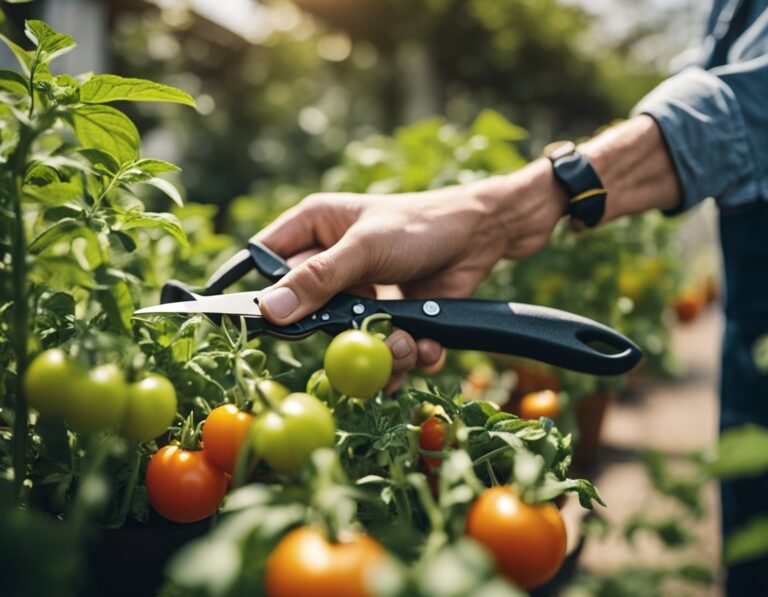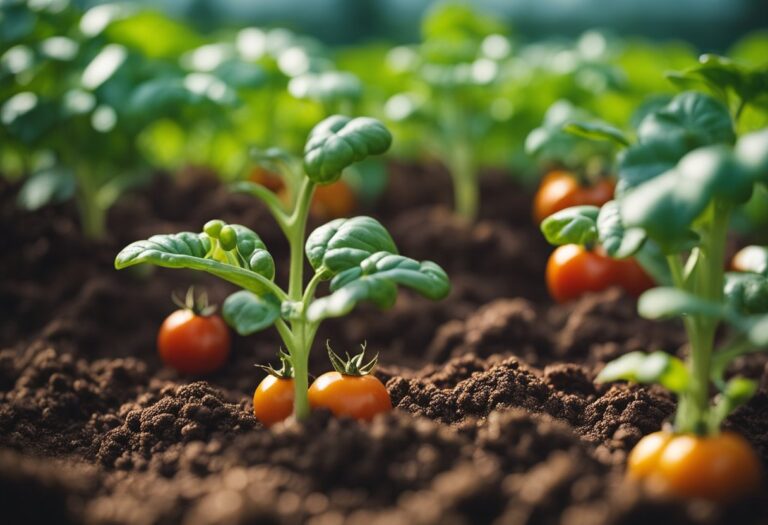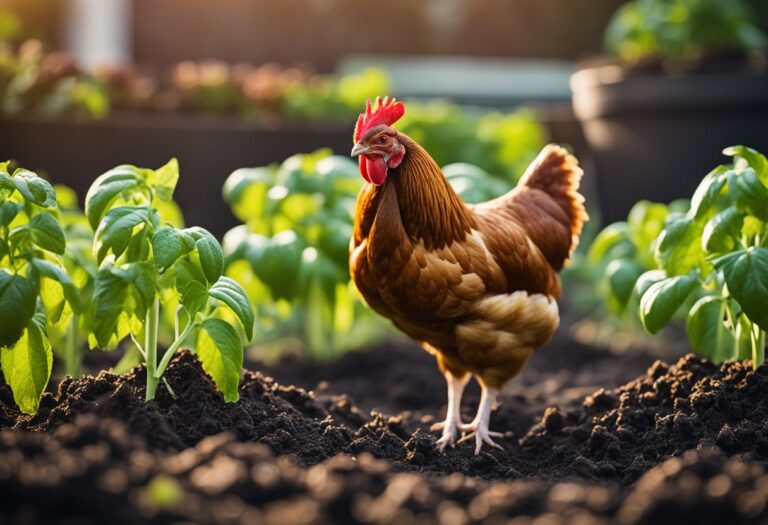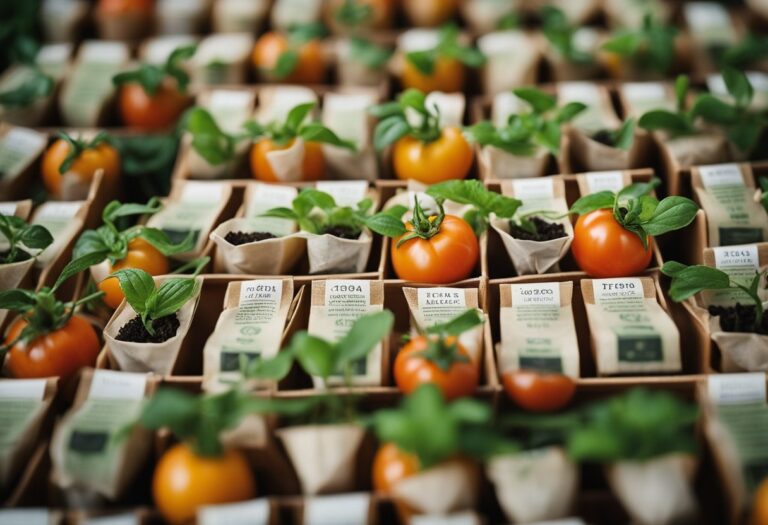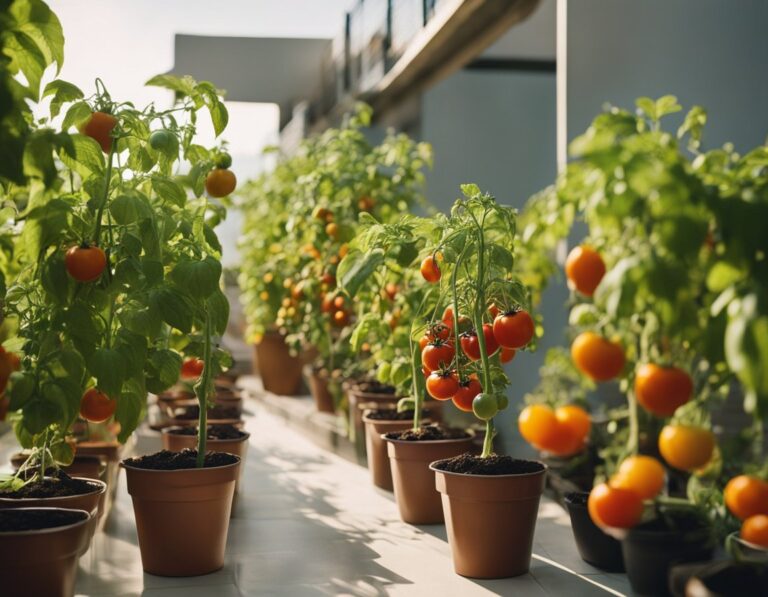How Much and How Often to Water Tomato Plants: A Friendly Guide
If you’re growing tomato plants, you know that they need water to thrive. But how much water do they need, and how often should you water them? The answer depends on several factors, including the climate you live in, the type of soil your plants are growing in, and the stage of growth your plants are in. In this article, we’ll explore the ins and outs of watering tomato plants, so you can keep your plants healthy and thriving.
Understanding Tomato Plant Water Needs Tomato plants need water to grow and produce fruit, but they don’t like to be overwatered. Too much water can lead to root rot and other problems. On the other hand, too little water can cause the plants to wilt and the fruit to crack. So how do you strike the right balance? One key is to understand how much water your plants need at different stages of growth.
Watering Techniques for Tomato Plants Once you know how much water your tomato plants need, it’s important to use the right watering techniques. For example, you should avoid getting water on the leaves and fruit, as this can promote disease. Instead, water the soil around the plants, using a drip irrigation system or a soaker hose if possible. You should also water your plants in the morning, so the leaves have time to dry before nightfall.
Understanding Tomato Plant Water Needs
Tomato plants are thirsty plants and require consistent watering to produce healthy and abundant fruit. Proper watering helps to prevent blossom-end rot, cracking, and splitting of the fruit.
However, overwatering can be just as detrimental to the plant’s health as underwatering. Here’s what you need to know about watering your tomato plants.
Factors Affecting Water Requirements
Several factors affect the amount of water that tomato plants need. These include the size of the plant, the stage of growth, the temperature, humidity, and the type of soil.
As a general rule, tomato plants need 1 to 2 inches of water per week. However, during hot, dry weather, they may need more frequent watering to prevent the soil from drying out.
Signs of Overwatering and Underwatering
Overwatering can lead to root rot, which can be fatal to the plant. Signs of overwatering include yellowing leaves, wilting, and a sour smell coming from the soil. On the other hand, underwatering can cause the plant to wilt and the fruit to become dry and shriveled. Signs of underwatering include dry soil and wilted leaves.
To determine if your tomato plant needs water, stick your finger into the soil up to the second knuckle. If the soil feels dry, it’s time to water. If the soil feels moist, wait a day or two before checking again.
It’s important to water deeply and infrequently to encourage the roots to grow deep into the soil. Avoid watering the leaves and fruit to prevent disease and sunscald.
Watering Techniques for Tomato Plants
When it comes to watering tomato plants, there are a few different techniques you can use to ensure your plants get the right amount of moisture. In this section, we’ll cover the basics of drip irrigation, hand watering tips, and using mulch to retain moisture.
Drip Irrigation Basics
Drip irrigation is a great way to water your tomato plants because it delivers water directly to the roots, where it’s needed most. This method also helps to conserve water since it reduces evaporation and runoff.
To set up a drip irrigation system, you’ll need a few basic supplies, including a drip tape or hose, a pressure regulator, and a timer. Once you have everything you need, simply attach the drip tape or hose to your water source and run it along the base of your tomato plants. Be sure to adjust the flow rate so that your plants receive the right amount of water.
Hand Watering Tips
If you prefer to water your tomato plants by hand, there are a few tips you can follow to ensure you’re doing it right. First, water your plants early in the morning or late in the evening when the sun is not as strong.
This will help to reduce evaporation and ensure your plants have enough time to absorb the water before the heat of the day sets in. Second, water your plants deeply and infrequently, rather than giving them frequent shallow waterings. This will encourage the roots to grow deeper and make your plants more resilient to drought.
Using Mulch to Retain Moisture
Mulch is a great way to retain moisture in your soil and reduce the need for frequent watering. You can use a variety of materials for mulch, including straw, leaves, grass clippings, or even plastic sheeting.
Simply spread a layer of mulch around the base of your tomato plants, making sure to leave a small space around the stem to prevent rot. The mulch will help to keep the soil cool and moist, which will benefit your plants in the long run.
Remember, the key to watering tomato plants is to give them the right amount of water at the right time. By following these tips and techniques, you can ensure your plants stay healthy and productive all season long.
Determining the Right Watering Schedule
Watering your tomato plants is a balancing act. You want to provide enough water to keep them healthy and productive, but you don’t want to overwater them and encourage disease. Here are some factors to consider when determining the right watering schedule for your tomato plants.
Soil Moisture Testing
Before watering your tomato plants, it’s important to check the soil moisture level. You can do this by sticking your finger into the soil up to the second knuckle. If the soil feels dry at that depth, it’s time to water. If it feels moist, wait a day or two and check again.
Another way to test soil moisture is to use a soil moisture meter. These inexpensive tools are available at most garden centers and can give you an accurate reading of the soil moisture level.
Weather Considerations
The weather can also impact how often you need to water your tomato plants. If it’s hot and dry, your plants will need more water than if it’s cool and damp. Windy conditions can also dry out the soil quickly, so keep an eye on the weather forecast and adjust your watering schedule accordingly.
It’s also important to water your tomato plants early in the day, so they have time to dry out before nightfall. Wet foliage can encourage disease, so avoid watering late in the day or at night. By following these tips, you can ensure your tomato plants get the right amount of water to thrive and produce a bountiful harvest.
Common Mistakes to Avoid
When it comes to watering tomato plants, there are a few common mistakes you should avoid to ensure the health and productivity of your plants.
Overwatering
One of the most common mistakes gardeners make is overwatering their tomato plants. This can lead to root rot, which can kill the plant. To avoid overwatering, make sure the soil is moist but not waterlogged. You can use a moisture meter to check the soil moisture level.
Underwatering
On the other hand, underwatering your tomato plants can also be detrimental to their health. Tomato plants need a consistent supply of water to produce healthy fruit. If you notice the leaves of your tomato plant are wilting or turning yellow, it may be a sign of underwatering.
Watering at the Wrong Time
Another mistake gardeners make is watering their tomato plants at the wrong time. Watering during the hottest part of the day can cause the water to evaporate quickly, leaving the plants thirsty. It’s best to water tomato plants in the morning or evening when the sun is less intense.
Inconsistent Watering
Inconsistent watering can also be a problem for tomato plants. If you water your plants too much one day and not enough the next, it can stress the plants and affect their productivity. To avoid this, try to water your tomato plants on a consistent schedule, such as every two to three days.
By avoiding these common mistakes, you can ensure your tomato plants are healthy and productive. Remember to always check the soil moisture level and water your plants at the right time to keep them happy and hydrated.
Additional Tips for Healthy Tomato Plants
Fertilization and Watering
To ensure that your tomato plants are healthy and productive, it is important to fertilize them properly. You can use a balanced fertilizer, such as a 10-10-10 or 20-20-20, and apply it according to the package instructions.
Additionally, make sure to water your tomato plants regularly to prevent the soil from drying out. You can use a soaker hose or drip irrigation system to deliver water directly to the roots, which can help prevent disease and reduce water waste.
Pruning and Plant Support
Proper pruning and support can also help promote healthy tomato plants. You should remove any suckers that grow between the stem and branches of the tomato plant, as these can divert energy away from fruit production.
Additionally, you can use stakes or cages to support the tomato plant and prevent it from falling over. This can help improve air circulation and reduce the risk of disease.
Remember that tomato plants have different watering requirements depending on their age, size, and growing conditions. By following these additional tips, you can help ensure that your tomato plants are healthy and productive throughout the growing season.
Frequently Asked Questions
What’s the ideal amount of water for potted tomato plants?
When it comes to watering potted tomato plants, the ideal amount of water is about 1 to 2 inches per week. However, this can vary depending on factors such as the size of the pot, the type of soil, and the climate. It’s important to monitor the soil moisture regularly and adjust your watering schedule accordingly.
How can you tell if you’re giving too much water to your tomato plants?
Overwatering tomato plants can lead to root rot, yellowing leaves, and stunted growth. To determine if you’re giving too much water to your tomato plants, check the soil moisture level by sticking your finger about an inch deep into the soil.
If the soil feels consistently damp or waterlogged, you may be overwatering. Adjust your watering schedule and reduce the amount of water you give to your plants.
In hot climates, how should your tomato watering schedule change?
In hot climates, tomato plants may require more frequent watering to prevent wilting and dehydration. It’s recommended to water your tomato plants deeply once or twice a week, rather than giving them frequent light watering. This encourages deeper root growth and helps the plants withstand hot and dry conditions.
What are the watering needs for cherry tomatoes grown in containers?
Cherry tomatoes grown in containers have similar watering needs as other potted tomato plants. Aim to water them about 1 to 2 inches per week, depending on the size of the container and the climate. It’s important to ensure that the soil is well-draining and that excess water can drain out of the container to prevent waterlogging.
Is daily watering necessary for healthy tomato growth?
Daily watering is not necessary for healthy tomato growth. In fact, overwatering can be detrimental to the plants. Tomato plants require consistent moisture, but they also need time to dry out between watering to prevent root rot.
A good rule of thumb is to water your tomato plants deeply once or twice a week, depending on the climate and soil conditions.
How can you identify when it’s time to water your tomato plants?
To identify when it’s time to water your tomato plants, check the soil moisture level by sticking your finger about an inch deep into the soil.
If the soil feels dry to the touch, it’s time to water your plants. It’s important to water deeply to encourage healthy root growth and to prevent water stress.

